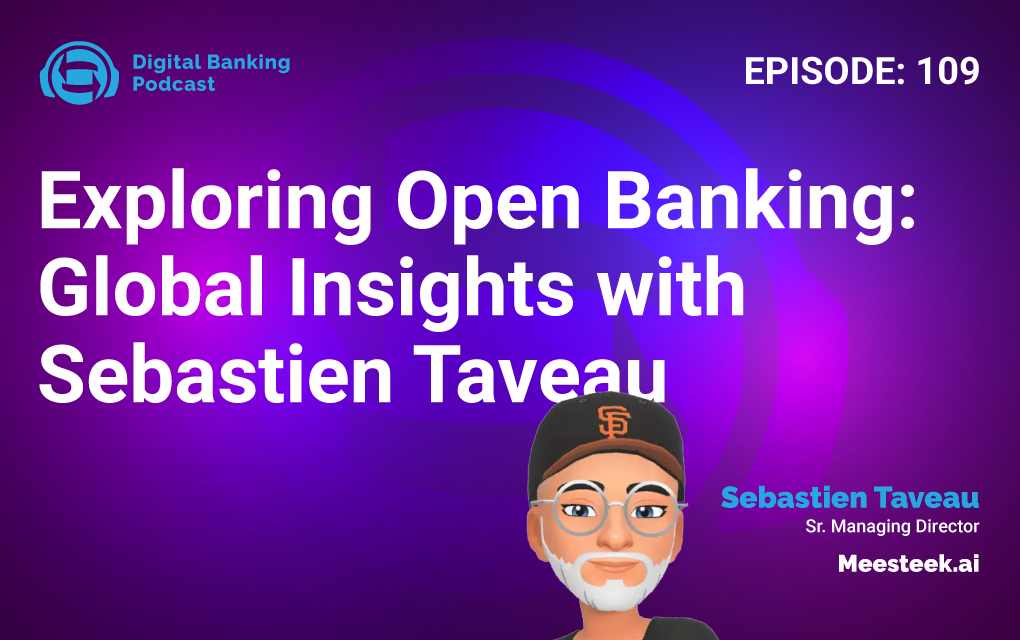Open Banking, Conversational AI and a Whole Lot More, with Dan Black of Boost.ai
LISTEN NOW
“The core philosophy, which still remains true, is: What app or what user or what devices that user has access to, and how are we going to get them back to engage with the platform and the experience — more than the financial institution down the street who’s on another digital banking system?”
Episode Summary
Each new voice on The Digital Banking Podcast brings with it a fresh perspective that adds to the conversation, and this installment is no different.
In this episode of The Digital Banking Podcast, host Josh DeTar welcomed Dan Black, Strategic Partnerships and Accounts at Boost.ai. The two discussed open banking and the age of conversational AI. They also covered the conversion to digital banking, ways of communicating with users, and the evolution of fraud in financial services.
Key Insights
⚡ What is open banking?
The evolution of financial technology has really been about the transition from institution-centric banking to accountholder-centric banker, i.e., putting each consumer in charge of their own finances like never before. Open banking represents the next step in that evolution. As Black pointed out, open banking is all about integration and making a consumer’s financial information more usable by the consumer. “Looking for that platform that can support quick integrations — the new and emerging technologies that really hit all areas of that kind of modern banking infrastructure and kind of ecosystem,” said Black. “We’re talking about chatbots and AI, financial wellness, money movement capabilities, and even digital solutions — finding the right combination of all those technologies that can work together. And if they don’t, then that’s maybe an area to look into when improving the technology stack for a financial institution.”
⚡ The age of conversational AI is here.
“There are 24 million users of Bank of America, and Erica is their virtual assistant technology chatbot,” noted Black. “They completed over 123 million interactions in Q4 of last year.” The key is conversational AI. “I think that can really support digital transformation as a whole for a bank or credit union as well,” he continued. “You know very well when you change a digital banking system, a core banking system, cards, payments, there’s friction in that change on the user experience level. So if you do have somebody to take the heat initially, in a digital assistant format, those are things I’m actively talking about, and the culmination of my experience coming to conversational AI really supports the entire organization for it.”
⚡ The time is now for a Chief Digital Officer.
In the past, technology belonged to the CTO, marketing belonged to the CMO, lending belonged to the CLO, etc. However, in todays’ community FIs, it’s all about technology. More and more, it makes sense to have one person who can cross all boundaries and manage the institution’s digital strategy. “This dedicated person is going to be in charge of fintech-type partnerships,” said Black. “To me, that’s being proactive — having a repository of data and information in all these different categories that we’ve been talking about throughout the podcast.” He said this will make the institution more nimble and able to respond quickly in the face of rapid change. “When something like COVID happens, and I need a digital communication strategy, this kind of initiative’s information is out already, so I can make a decision quickly and respond,” he said. “I’m not having to field those calls through the call center; in that example, when COVID breaks out or with PPP loans. The list goes on and on.”
About The Guest
The Black family has been deeply rooted in the community FI space since Black’s great-grandfather became a community banker in Nebraska. Black’s great-grandfather and grandfather were presidents of the Nebraska Bankers Association, and Dan is now following in their footsteps. He is passionate about security compliance, anomaly detection, fraud prevention, digital banking, money movement, and the effects of these systems on financial institutions.










